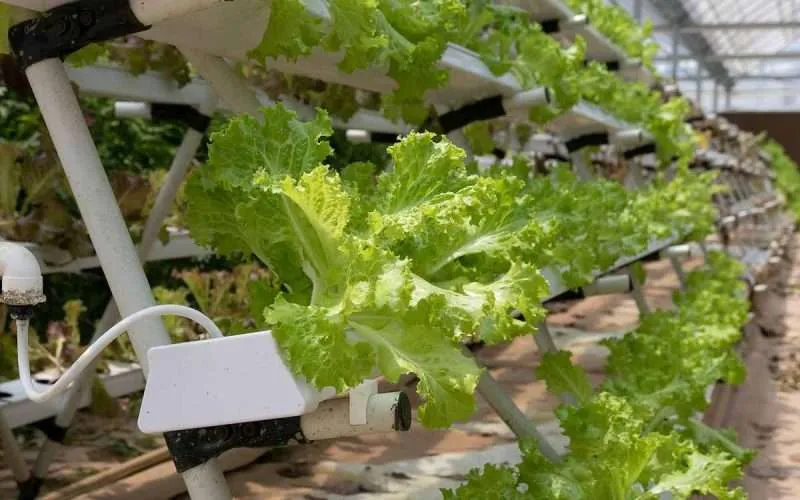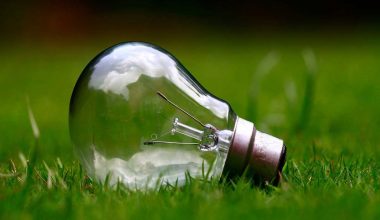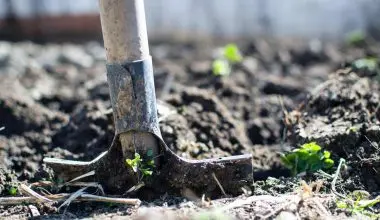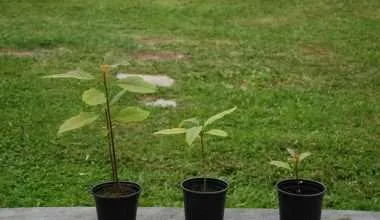Table of Contents Show
Have you always wanted to grow your own fruits and vegetables? Now you can enjoy edible plants all year round in your hydroponics garden.
It is an ingenious method of growing your food without any soil. You don’t even need a lot of space for the setup. It works well just anywhere, from kitchen counters to dining rooms.
Hydroponic gardens are becoming popular everywhere as it is a sustainable way of growing plants faster and uses less water than traditional agriculture. Read more about hydroponics, its benefits, and how to set up your own.
What Are Hydroponics Gardens?
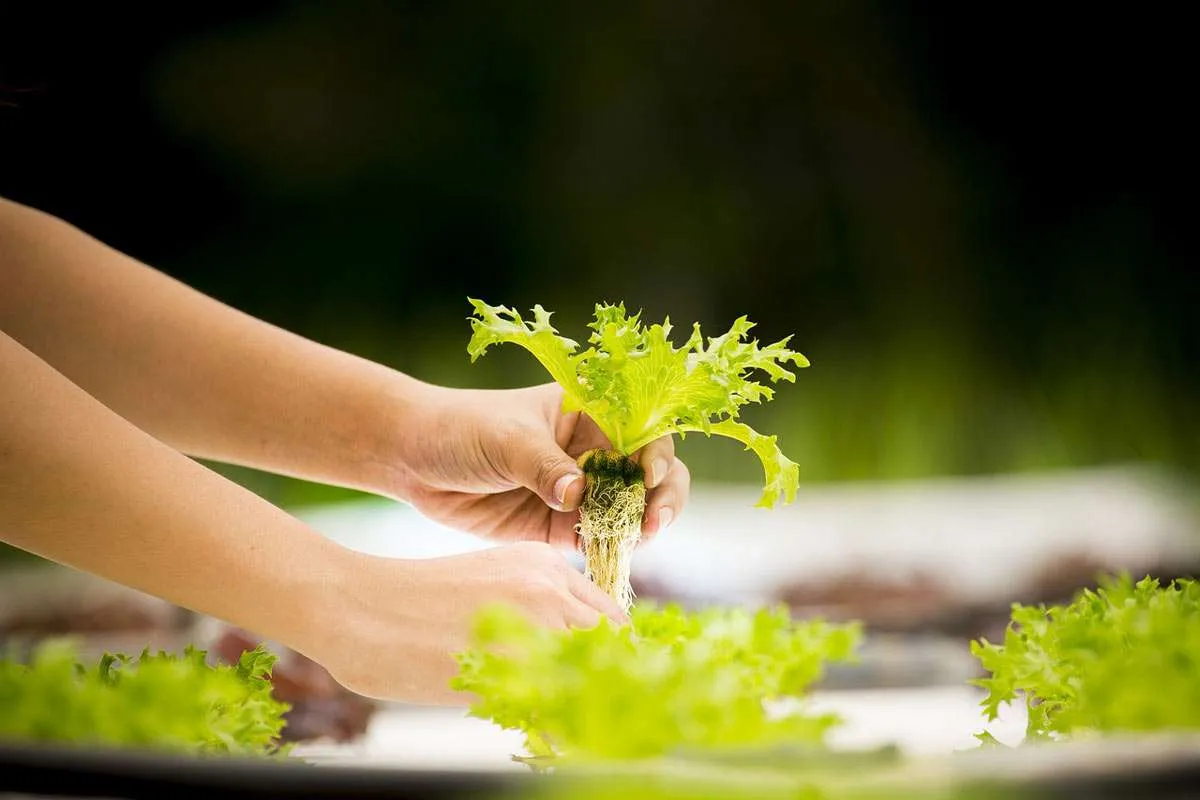
The word hydro means water in Greek, and ‘ponos’ translates to work. In hydroponic gardening, the water is at work – it delivers the necessary nutrients to the roots of plants.
Plants need sunlight, water, air, and carbon dioxide (generally from air circulation) to grow. In traditional farming, the root system of the plants has to search for nutrients in the soil. However, in a hydroponic garden, nutrients get dissolved in the plant roots, surrounded by water.
In a hydroponics setting, plants have better access to their required nutrition. As a result, plants sprout quickly and grow bigger and more beautiful.
Hydroponic gardening systems work by providing detailed control over various environmental conditions such as pH balance, temperature, water, and full exposure to nutrients. Their main principle is to meet the exact requirements of plants.
The hydroponic systems manage nutrient solutions customized to the needs of the plants that are being grown. They give control and freedom to adjust the amount of lights plants get and exposure to it as well, replicating the natural sun for photosynthesis.
Plants require air circulation to get the carbon dioxide necessary for photosynthesis, indoor hydroponic garden systems use vents or fans.
You can also adjust the pH levels and even monitor them closely. When the environment is controlled and customized, plants get what they exactly need to grow to their full potential.
You can either have hydroponics outdoor garden or an indoors one. However, people with limited space can start the process from their apartment.
Hydroponics Garden Indoor For Beginners
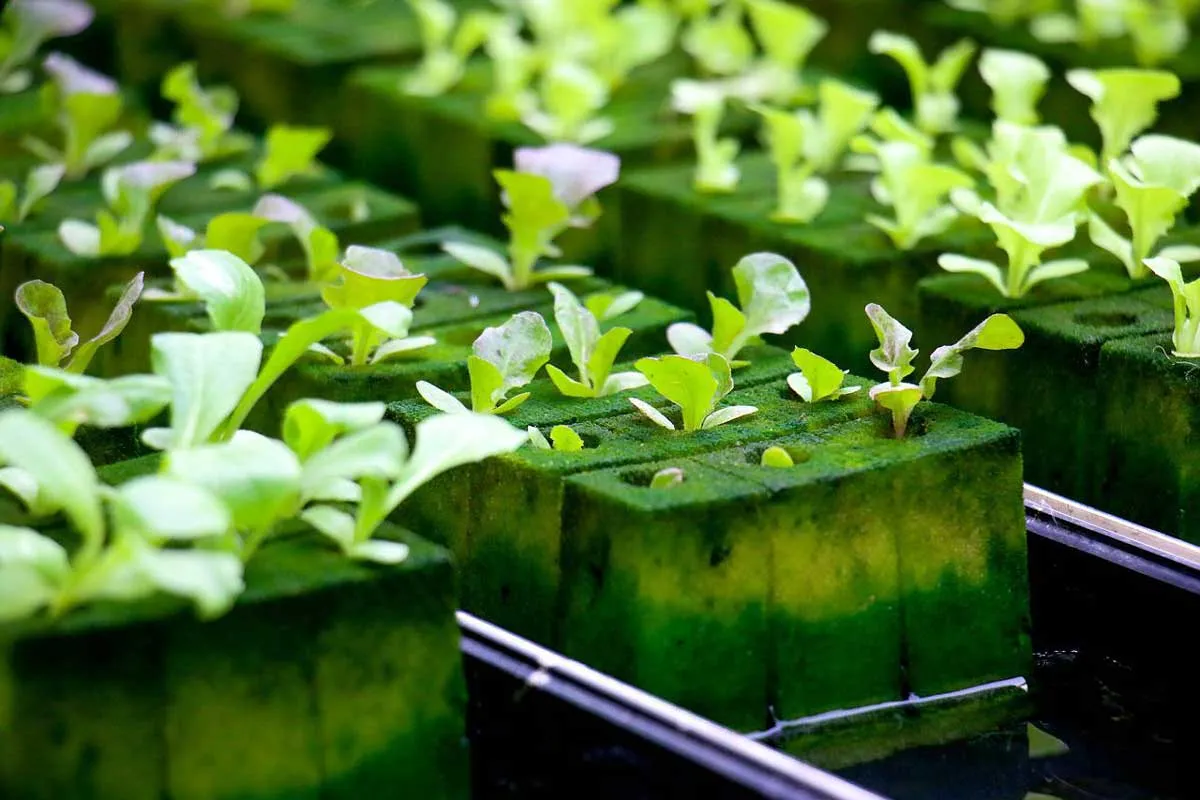
Even if you have never grown plants before, you can easily get the hang of the system. There are three hydroponics garden systems that can be used for hydroponics garden DIY for beginners. These include water culture, wick, and ebb and flow for growing plants indoors.
The more advanced systems include the aeroponic system and nutrient film technique.

Greens like spinach, swiss chard, kale, and spinach are easy to grow. In herbs, parsley, cilantro, mint, oregano, and basil can be grown by new garderners. Fruits such as strawberries, tomatoes, and hot peppers are easy to grow.
Even your kids can grow them and set up and maintain the system. It is great to get them involved in gardening from an early age and this way they can get to learn a lot about nature and the many advantages of plants growing indoors.
There are various kinds of systems for hydroponic growing. In some hydroponic systems, the roots of the plant hang in the water. While in others, the plants grow in a sort of soil substitutes such as coconut coir or fiber, perlite, aged bark, clay pebbles, or peat moss.
You also don’t require any special seed pods to grow hydroponic plants. Just buy any garden seeds for the crops that you want to grow.
Pests and diseases also stay away most of the time because there is no soil for them to make their home on. Therefore, due to no dirt, there are fewer chances of pest infestation.
Components Of Hydroponics Home Garden
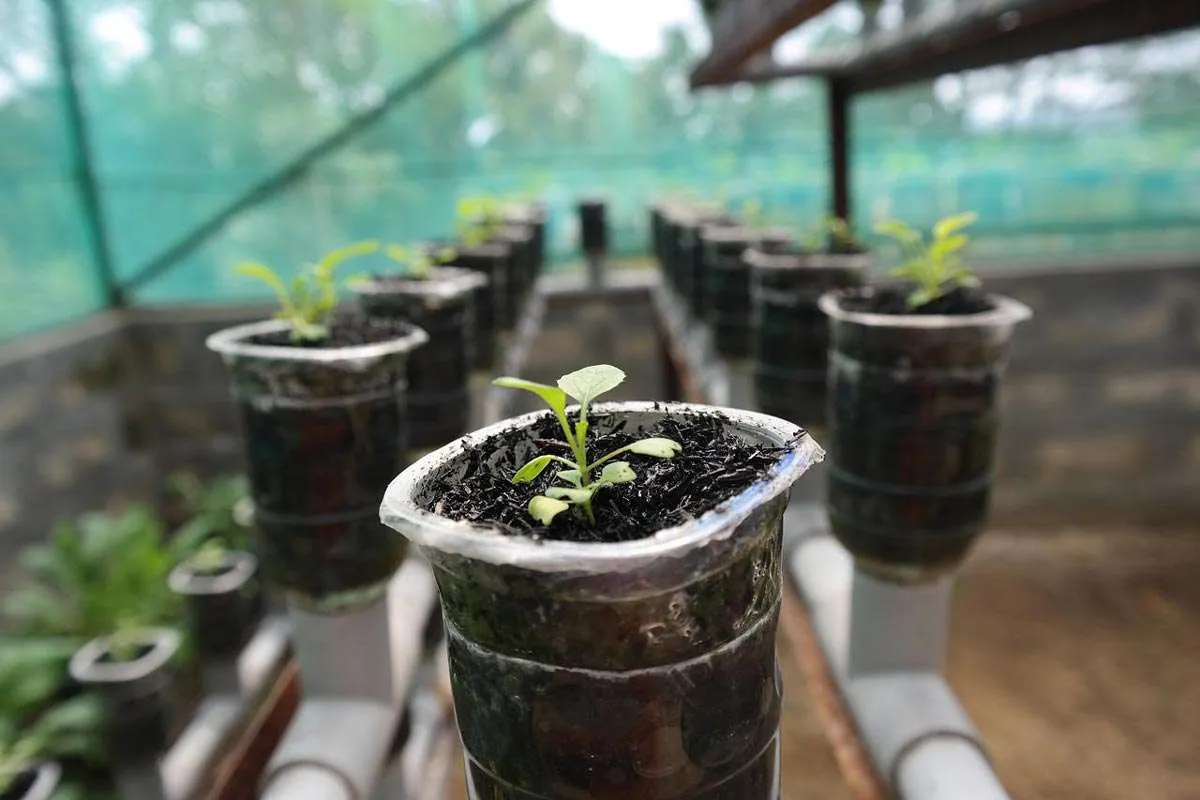
Before getting started, you will need to know the main components of a hydroponic system and the resources required to make the system run smoothly.
Hydroponics growing media
The plants are grown in dormant media that supports the weight of the plant and its root structure. The growing medium is the alternative to soil.
Although it does not provide any nutrition to the plants, its porous properties retain moisture and absorb nutrients from the nutrient-rich water solution, delivering them to the plants.
The growing media is also pH-neutral so they don’t disrupt the balance of the nutrient solution.
There are many media to choose from, and the particular hydroponic system and the plants you are growing will determine which media is suitable. It can be bought online and from gardening stores or local nurseries.
Air pumps and air stones
Plants submerged in water can drown for some time if the nutrient-filled water is not adequately aerated. Air stones are helpful in dispersing small bubbles of dissolved oxygen throughout the nutrient solution reservoir. The bubbles of oxygen help disperse the dissolved hydroponic nutrients evenly in the solution.
Air stones are not capable of generating oxygen. Therefore, they need to be joined with an external air pump through a food-grade plastic tubing that should be opaque. The opacity of the tubing will prevent the growth of algae in the system. Air pumps and air stones are also used in aquariums and are easily available at pet shops.
Net pots
These are mesh planters that support and hold the plants in a hydroponic system. The material is latticed, which allows the growth of plant roots from the bottom of the pot and from the sides as well. It gives improved exposure to liquid nutrients and oxygen.
Net pots are also great in providing amazing drainage to the plants, in comparison to traditional plastic plots and clay pots.
Benefits Of Gardening With Hydroponics
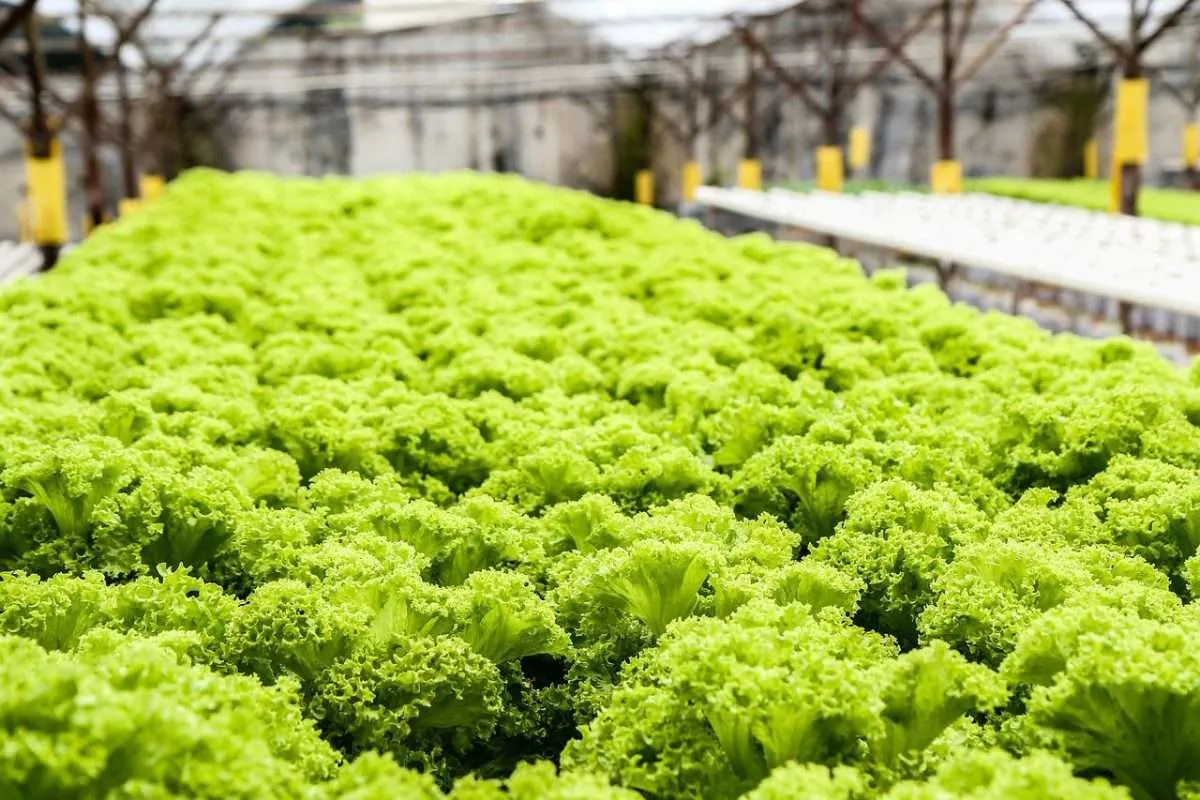
Hydroponic gardening is proved to have way more benefits than soil gardening. Here are some of the main benefits:
1. Better plant growth
Plants grow 30 to 50 percent faster in a hydroponics setting compared to the same conditions in soil gardening. The yield is also more. Scientists say that the additional oxygen in a growing medium encourages and stimulates the plant roots to grow.
Therefore, a plant getting the necessary oxygen in its roots will absorb the nutrients more efficiently and faster. The plant does not have to seek the nutrients in the soil, but nutrients are sent directly to the plant along with ample water.
The necessary nutrients are also transferred to the plant multiple times a day. Plants in hydroponics vegetable garden need very little amounts of energy to search for and break down food. Thus, it uses its reserved energy to grow better and faster, hence producing more fruit.
Hydroponic plants also have fewer issues with funguses, diseases, and bug infestations. Therefore, they grow happier, leafy green, and healthier. The controlled system enables a hydroponic gardener to maintain adequate growing conditions.
2. Good for the environment
A hydroponics Indoor garden has many benefits to the environment. They use less water than traditional gardening with soil because they keep reusing the hydroponics nutrient solution.
The use of pesticides and harmful herbicides is also lower on a hydroponic crop. They use no topsoil and hence, there is no risk of topsoil erosion.
Even so, if agricultural farming continues to waste water and deplete topsoil, everyone will have to switch to hydroponic farming to make mother nature happy.
3. Great for indoor gardening and small spaces
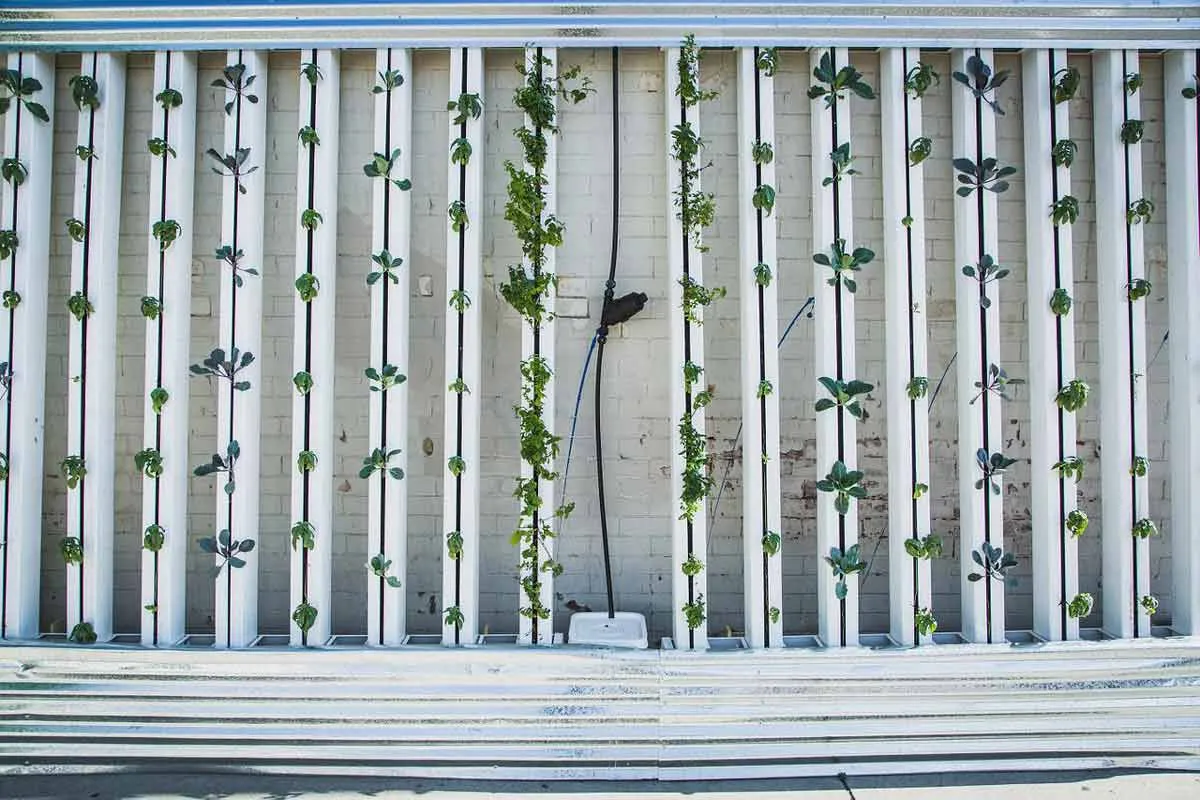
It is a great way to incorporate gardening if you have a small space, as hydroponic systems do not require a big area. In the same given space, hydroponic crops can be grown four times more than traditional techniques.
The systems are easy to set up and relocating your hydroponic garden will not be stressful, as the hydroponic systems can be easily moved. And you don’t need to be living in a suburban house.
From your living room to your office, it can be placed anywhere. You can also grow vertical hanging gardens to save more area.
4. They don’t require a lot of maintenance
Some systems do not require any extensive car, as they have automatic controls which can monitor nutrient and water levels.
It also has a timer to administer the drip irrigation process and add extra nutrition solutions whenever required.
5. They’re more than a garden
People who love beautiful spaces love to organize them in a way a functional and aesthetic way. Therefore, hydroponic systems can be designed in a way that they complement your home’s interior design.
Industrial designers are coming up with structures of hydroponic systems that can double up as furniture pieces. They are making use of real wood and polished metal to create new prototypes.
These interior pieces will be multifunctional and would be able to fit different things. The garden aspect would still be present, but with more space for other things.
You can invest in Rise Garden, an indoor hydroponics system that is visually attractive enough to be placed in your living room.
How To Make Hydroponics Garden
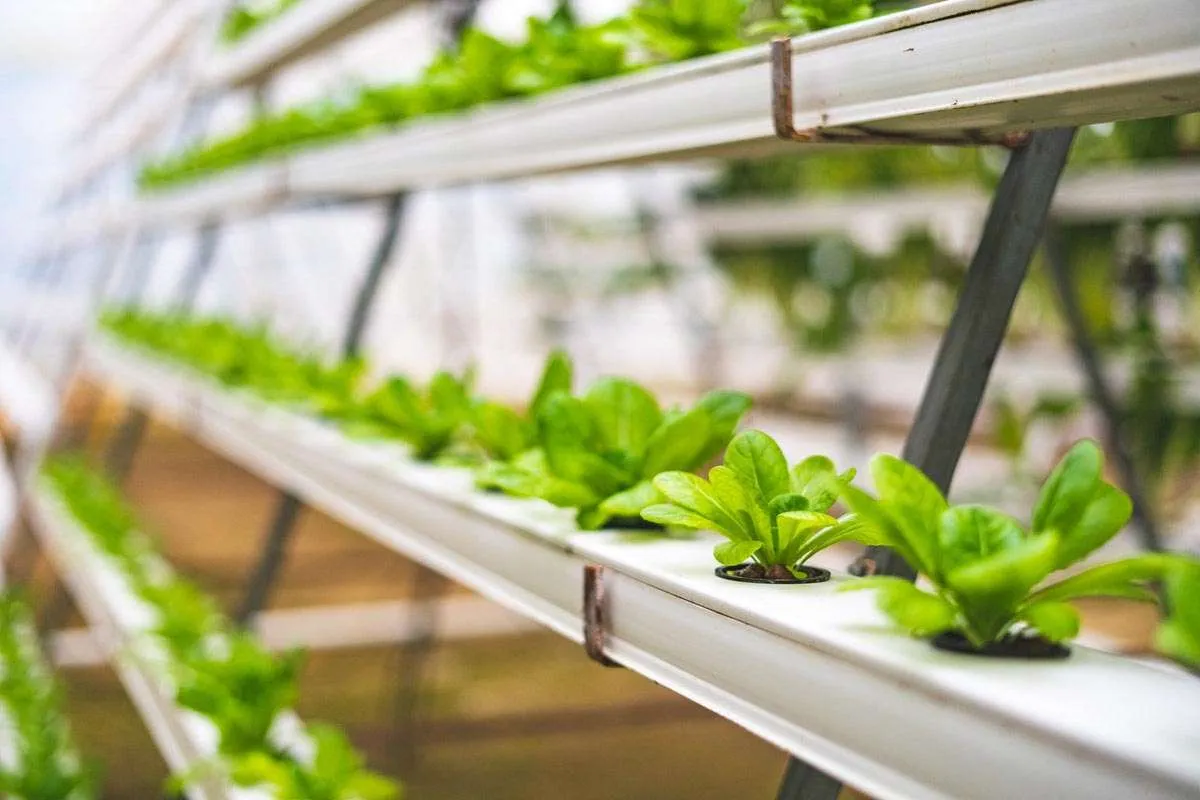
Hydroponics gardens are not just a cool trend or an easy way to grow a few plants. They are seen as the future of food production and gardening. This is because hydroponics vertical garden can get adjusted anywhere and encourage everyone to grow their own nourishing food.
You may have tasted a vegetable or fruit of a hydroponic farm if you’ve bought any fresh herb, tomatoes, strawberries, or cucumbers from the grocery store.
But why buy produce from the grocery store when you can get your own hydroponic garden vegetables and fruits? Here is a complete guide to get you started on your own hydroponics garden, including the necessary hydroponics garden supply to purchase and the cost.
Here is a step-by-step guide on setting up your hydroponic garden.
Tools or Equipment needed
- Growing tray
- Grow light (optional)
- Cotton or nylon cord
- Hydroponic fertilizer (dry or liquid)
- Bucket or basin for water reservoir
- Drill or screwdriver (optional)
- Water
- Growing medium
- Seedling
Wick System
It is simple and easy to set up because there are no electrical components or moving parts involve in the process.
This hydroponic grower system is not recommended for growing plants that require a lot of water such as tomatoes or lettuce as the plants will use absorb more nutrients than what the wick can supply. It is great for growing herbs, peppers, leafy greens, and microgreens.
Instructions
- Set up a water reservoir filled with nutrient mix and water. This reservoir lies beneath the flat tray supporting the growing medium and plant.
- You will need to connect and attach one or two of the wicks via holes below the tray. You can make these holes with a screwdriver or drill. The wicks absorb the water from the water reservoir and transfer it up to the wicks to the growing medium tray.
- The growing medium consists of a seedling, that is placed above the reservoir. Make sure to use a medium that does not drain quickly and makes use of the wick efficiently, such as perlite, soilless mixtures, and vermiculite.
- If you have natural light, well and great. If not, you can place a light fixture over the tray.
You can use incandescent light bulbs and set them at a distance of 24 inches from the hydroponic plant. Fluorescent lights and LEDs do not get too hot and can be placed at a distance of 6 and 12 inches, respectively, away from the plants.
Deep Water Culture System
A deep water culture system, also called a lettuce raft, is also easy to set up. In this method, the plants are put on a styrofoam platform that floats on the reservoir with water filled with nutrients.
Unlike the wick system, there is a need to aerate the water in this technique. It is suitable lettuce grow method and for a few other plants. It is not a good option for long-lived plants such as tomatoes.
It will take around 45 minutes to set up the system and at a low cost of $50. However, if you are using a grow light, the cost can go up to $100.
Tools and Equipment required
- A rotary tool, X-ACTO knife, or drill
- Grow light (not compulsory)
- Air pump and stone
- Basin or bucket for reservoir
- Clean water
- Styrofoam sheet
- Hydroponic fertilizer (liquid or dry)
- Seedling in net pots
Instructions
- The first thing you need is to set up the reservoir. Fill the container with nutrients and water. Your container should be opaque and not translucent or clear and over 12 inches in depth.
- Next, you need to aerate the water by creating an inexpensive aeration system with an air pump and stone. The air pump sends air via the stones, which take out small bubbles to disperse oxygen through all the water.
- Once the above two steps are done, it’s time to set up the growing raft. You can cut a floating styrofoam platform to adjust the top of the water reservoir. Make holes to insert net pots. The hydroponic plant root system requires contact with the reservoir water.
- The best source of light is the natural light of the sun. However, if you want to create your own light fixtures, then you make one above the growing container. Fluorescent and LED lights can be used and placed 6 to 12 inches away. You can also set them up above a growing container.
Ebb and Flow System
Also known as the flood and drain system, it has a bit more complex design. However, it is functional and extremely versatile.
It works by flooding the hydroponics growing medium in a water and nutrients solution, which will drain back into the water reservoir. It takes over an hour to create the setup. You would also need to change the water and fertilizer solution every week.
It costs around $75 for the setup and $125 if you use a grow light.
Tools or Equipment and Materials
- Electronic timer
- Grow light (optional)
- Submersible pump
- Water
- Growing flat container
- Stand for growing flat container
- Seedlings in net pots
- Hydroponic fertilizer (liquid or dry)
- Two tubes (fill tube and drain tube)
- Bucket or basin for water reservoir
Instructions
- The reservoir should be placed directly below the flat container’s stand with the nutrients and water. The same can be used for over a week’s time, but make sure to keep refreshing the nutrients each time you change your water.
- You will need to connect the water reservoir to the growing container through a drain tube and a fill tube.
- Attach a submersible pump along with a timer to get control in this method. Optimize the frequency and length according to the watering needs of the plant.
- You need a flood tray that can be made from any shallow container with a tall stand. Now you can plant the seedlings in perforated pots with a growing medium. Pots should be twice deeper as the flood tray.
- You can use a light fixture if you don’t have natural light.
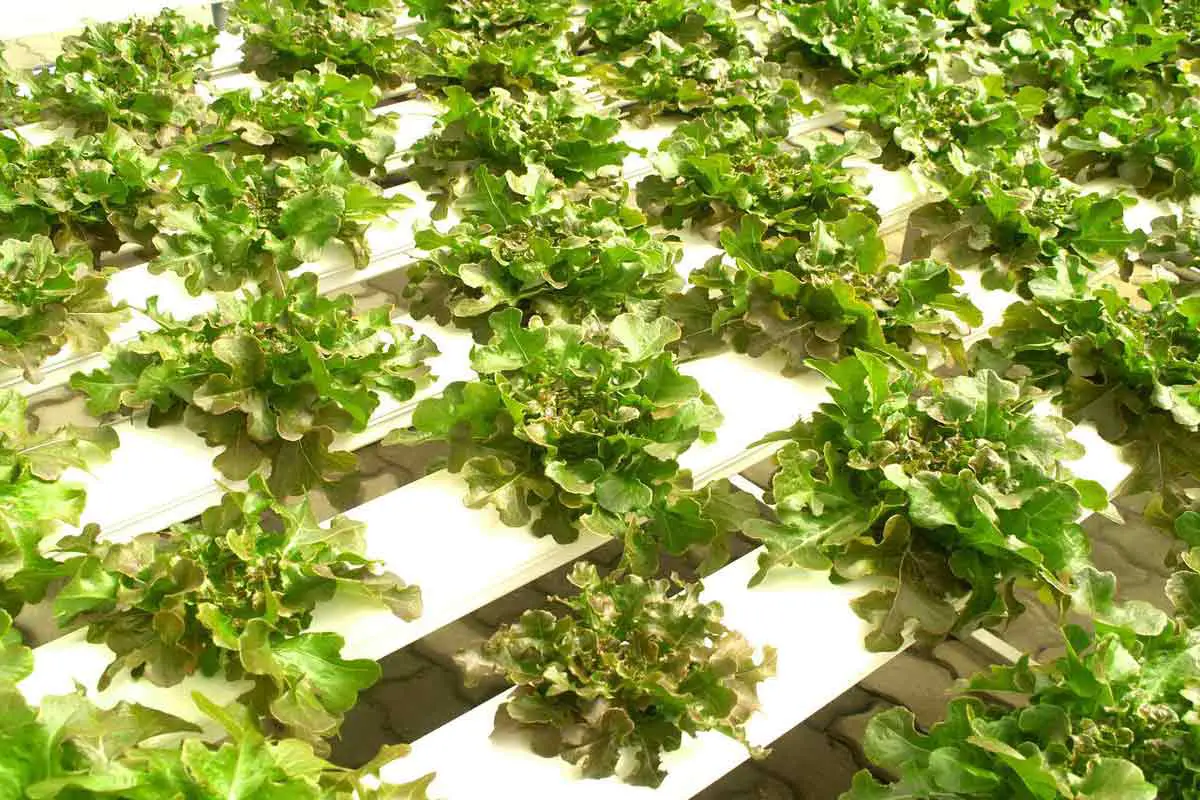
Spending time indoors makes you rethink the potential of space. We see so many hard lines and square shapes and our brains search for something resembling nature. This is why a lot of people are shifting towards a biophilic (love for life) design, that blends nature into indoor areas.
Plants have a positive effect on our brains and their aroma is known to lower stress and improve overall health. It’s wonderful to give out the love you have for nature to plants and hydroponic gardening can be a good step in that direction.
